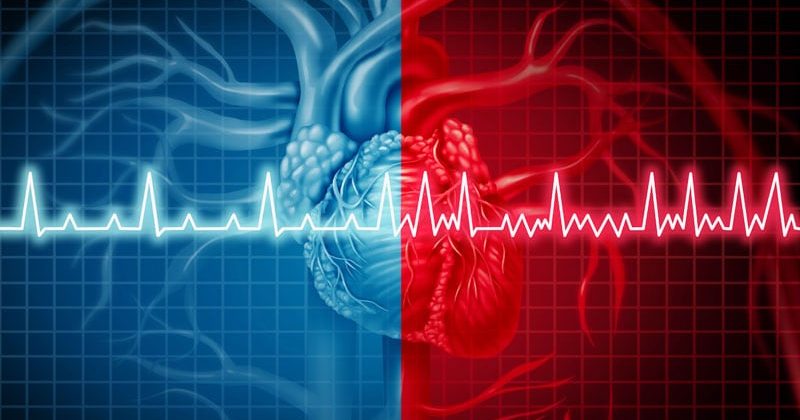A first-in-man pilot randomized study suggests that temporary spinal cord stimulation may reduce postoperative atrial fibrillation (POAF) in patients undergoing coronary artery bypass surgery.
Continuous external electrocardiographic monitoring for 30 days revealed POAF in 8 of 26 patients given standard beta-blockers and 1 of 26 patients who additionally underwent spinal cord stimulation (30.7% vs 3.8%; P = .012).
“In our study, the spinal cord stimulation procedure with a temporary lead was performed for around 7 days and after that the lead was removed. So, a relatively short period of spinal cord stimulation could prevent AF occurrence in the early postoperative period after coronary surgery without adding any other therapy,” principal investigator Alexander Romanov, MD, PhD, said in an email. “Of course, more data are needed to confirm this effect during long-term follow up.”
Postoperative AF is common after cardiac surgery, occurring in about 20% to 50% of patients, and increases short- and long-term risks as well as healthcare costs. Prophylactic and treatment strategies include beta-blockers, amiodarone, atrial pacing, and anticoagulation.
Spinal cord stimulation has been used for decades to treat refractory pain and angina, and has been shown in experimental models to reduce AF burden induced by tachypacing.
As reported today in the Journal of the American College of Cardiology, patients in the pilot TerminationAF study had at least three episodes of preoperative paroxysmal AF for up to 7 days in the prior 6 months. Their mean age was 61.6 and 78% were men.
Exclusion criteria were previous heart surgery or AF ablation, emergency bypass surgery, ejection fraction less than 35%, unstable angina, decompensated heart failure, persistent AF or AF at the time of screening, planned Maze or pulmonary vein isolation, use of class I or III antiarrhythmic drugs, need for concomitant valve surgery, or contraindications for spinal cord stimulation.
In the experimental group, a standard spinal cord stimulation trial lead was placed under local anesthesia and fluoroscopic guidance by an experienced neurosurgeon in the posterior epidural space at the C7-T4 level left to the midline. The external portion of the lead was connected to a handheld stimulator, which was programmed by the physician and used by the patient to adjust the stimulation.
The device was active for 3 days before surgery, turned off during the operation, and restarted in the ICU for 7 days. Total stimulation time was 200 minutes.
Stimulation was deployed in all 26 patients without complications, and with no adverse major cardiovascular events, kidney injury, or spinal cord injury during follow-up.
“This is a routine procedure for neurosurgeons that lasts around 30 minutes with minimal risk of complications,” noted Romanov, with the National Medical Research Center of the Ministry of Health of the Russian Federation in Novosibirsk. “The learning curve for neurosurgeons is around 15-20 procedures.”
AF occurred at a median of 3.5 days in the control group and at 2 days in the spinal stimulation group. The average AF burden was 0.20% vs 0.006%, respectively (P = .009) and median total duration of AF episodes 4.95 hours vs 1.2 hours, respectively (no P value given).
“It’s too early to say that thousands of people should go out and get this, especially since it is an invasive procedure, but it definitely increases the appetite in the field for looking more into these autonomic neuromodulation therapies for cardiovascular disease, and arrhythmias in particular,” Stavros Zanos, MD, PhD, Institute of Bioelectronic Medicine, Feinstein Institutes for Medical Research at Northwell Health, Manhasset, New York, told theheart.org | Medscape Cardiology.
He noted there’s evidence that spinal cord stimulation for pain strongly modulates the activity of the autonomic nervous system, including cardiovascular autonomic reflexes. “Autonomic dysfunction and sympathovagal overactivation preceding POAF is therefore a likely high-level mechanism for its action.”
In the same issue of JACC, Zanos and colleagues report on a meta-analysis of seven randomized controlled trials examining various autonomic modulation strategies (low-level vagus nerve stimulation [LL-VNS], epicardial injections of botulinum toxin or calcium chloride, stellate ganglion blockade, ganglionated plexus ablation, spinal cord stimulation, and renal denervation) for POAF prevention.
The therapies reduced POAF incidence (odds ratio [OR], 0.37; 95% CI, 0.25 – 0.55) and lowered AF burden (mean difference -3.51 hours), length of stay (mean difference, -0.82 days), and interleukin-6 levels (mean difference, -79.92 pg/mL) in patients who developed POAF. Subgroup analysis suggested this was driven largely by LL-VNS (OR, 0.22) and epicardial injections (OR, 0.39).
“LL-VNS had the most impressive result in my opinion, as this is a completely noninvasive, safe approach with a clear OR effect,” Zanos said. “Its effectiveness may be related to the potential dual inhibitory effect on sympathetic ganglia and ganglionated plexi. This nonspecific effect, explained by the fact that the stimulus is delivered higher in the neurocardiac axis, may also involve extracardiac effects, for example, inhibition of the inflammatory reflex and reduction in systemic inflammatory markers.”
The analysis, however, was based on aggregate data and did not adjust for preexisting conditions and pre-, peri-, or post-cardiac surgery use of rate/rhythm control medications, the authors note.
Eight randomized controlled trials are currently ongoing that will provide further insights into the role of autonomic neuromodulation therapies and POAF prevention after cardiac surgery, including three trials with epicardial botox injection (NCT03779841, NCT02617069, NCT04075981) and three sham-controlled trials with LL-VNS (NCT04514757, NCT03392649, NCT03533140), Zanos and colleagues say.
Conflict of interest information was not available from Romanov and colleagues. Zanos and colleagues report having no relevant financial relationships.
J Am Coll Cardiol. Published online February 14, 2022. Romanov et al, Zanos et al
Follow Patrice Wendling on Twitter: @pwendl . For more from theheart.org | Medscape Cardiology, follow us on Twitter and Facebook .
Source: Read Full Article
